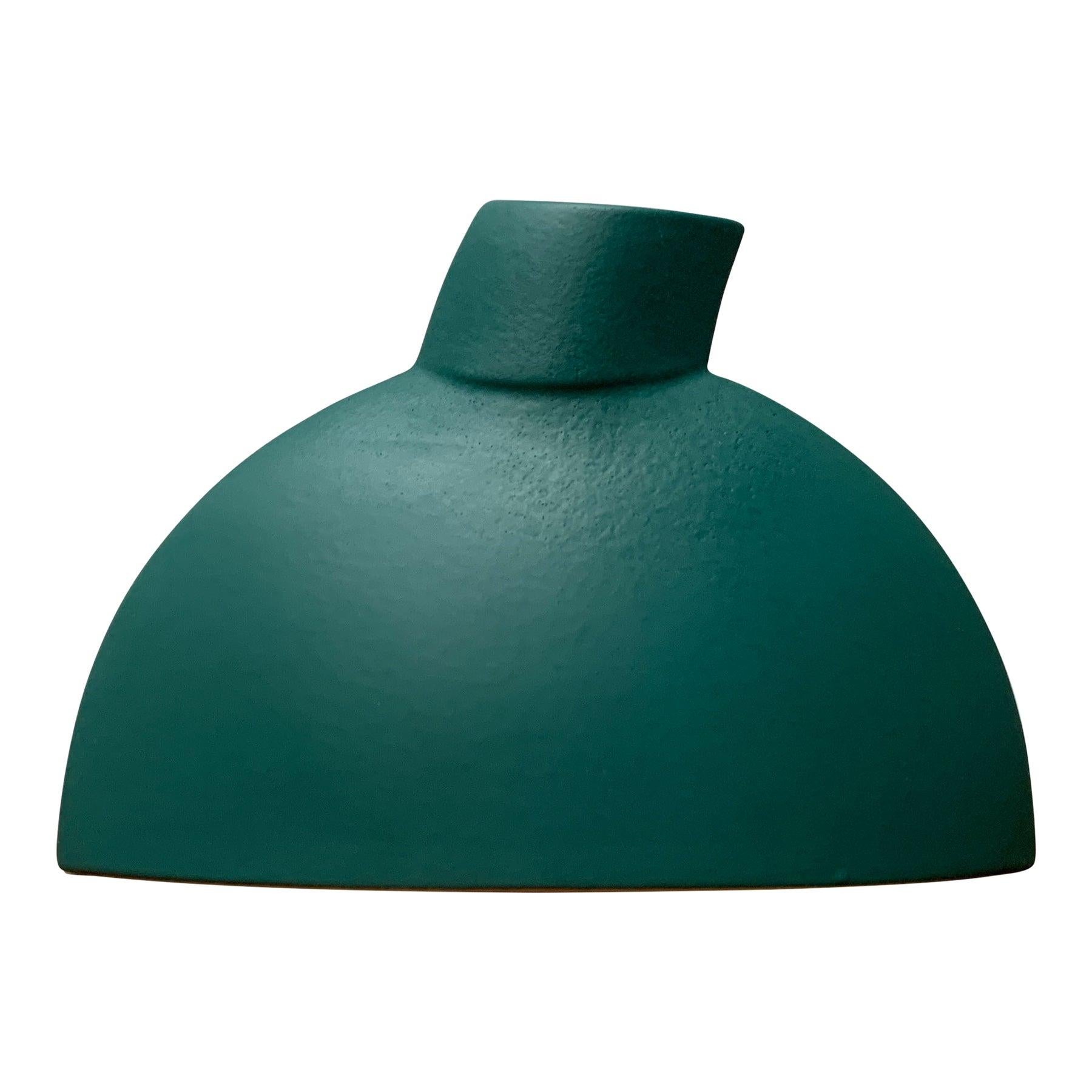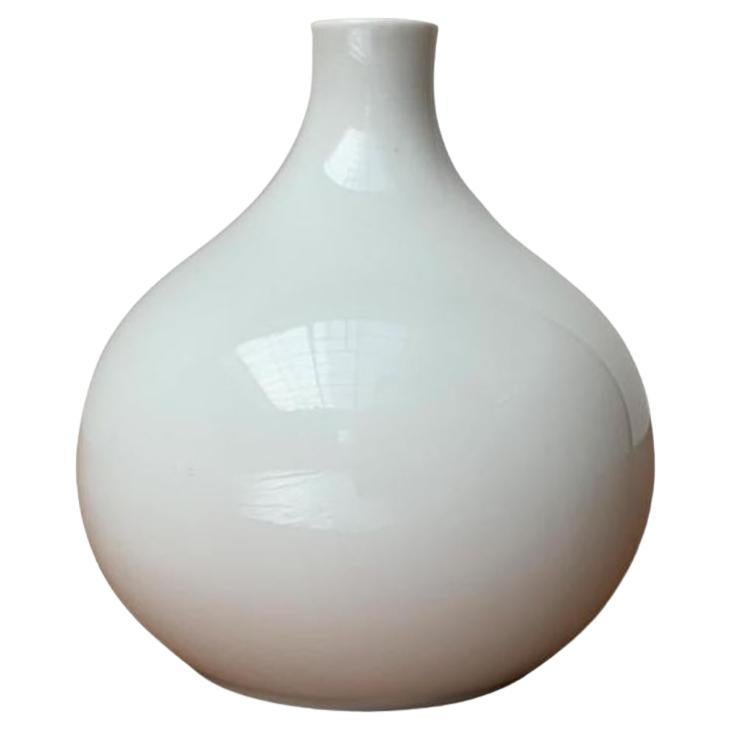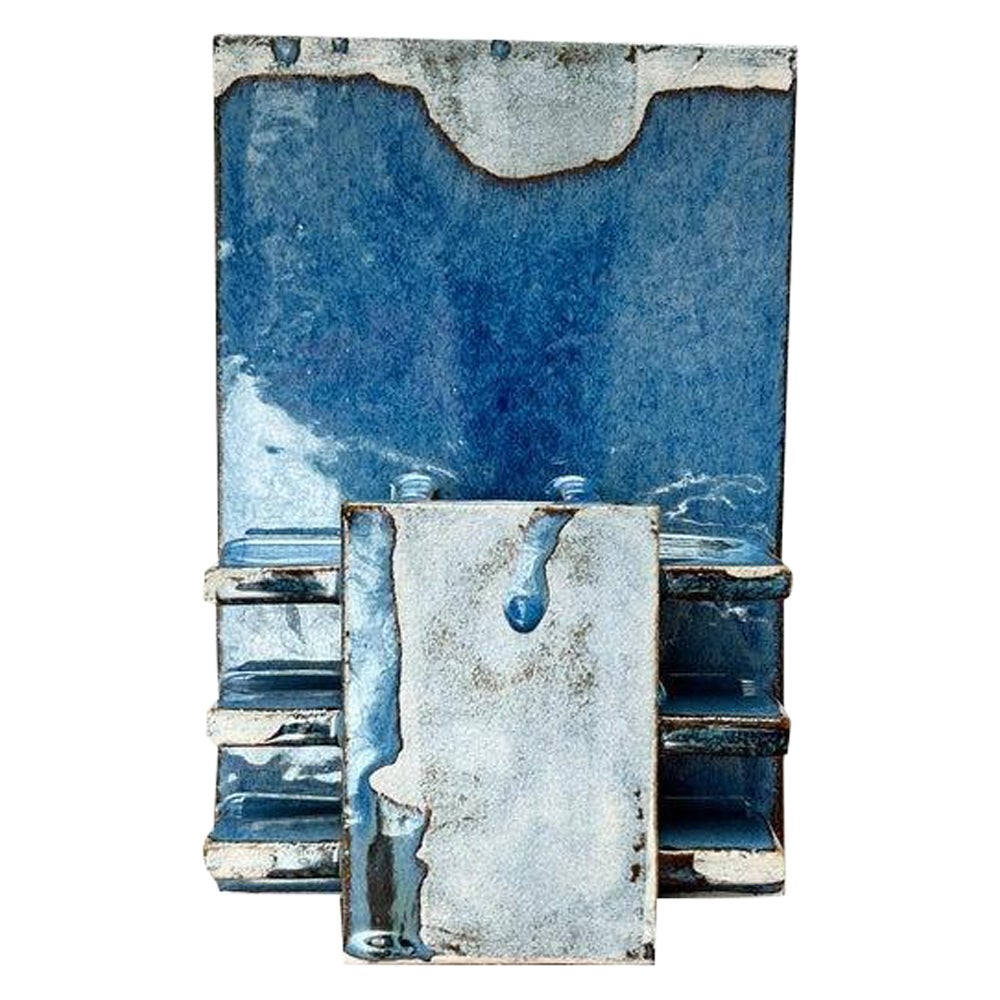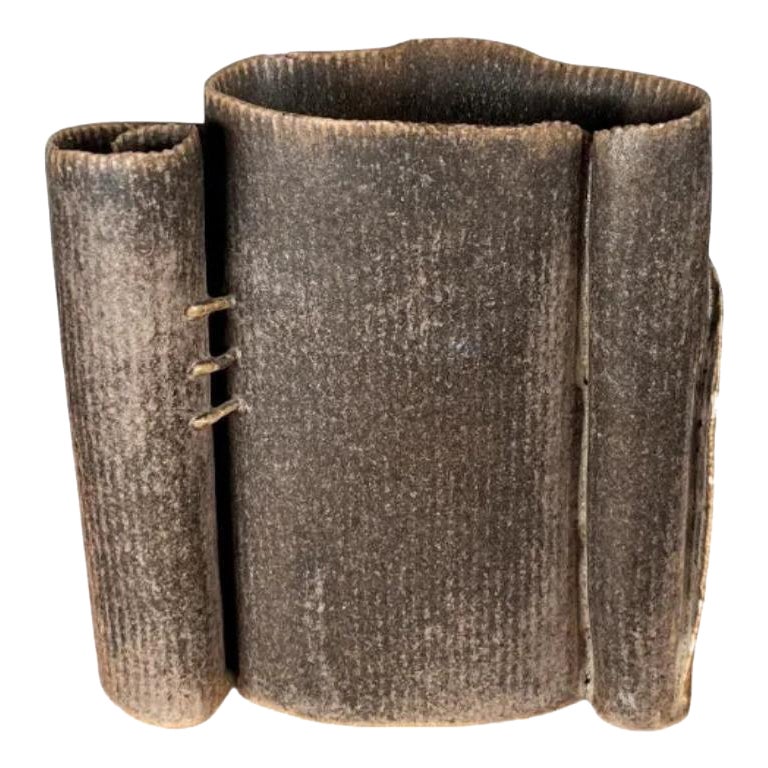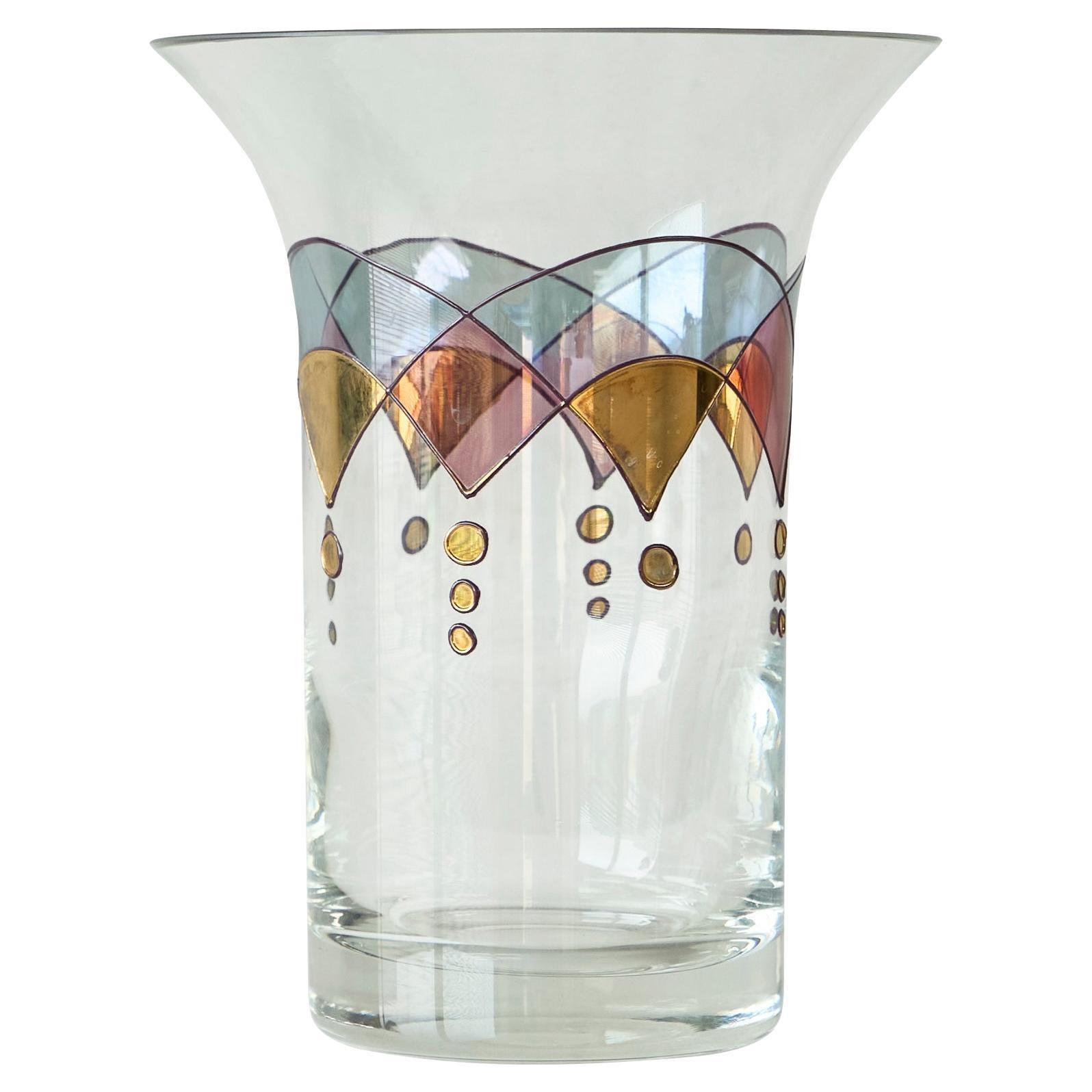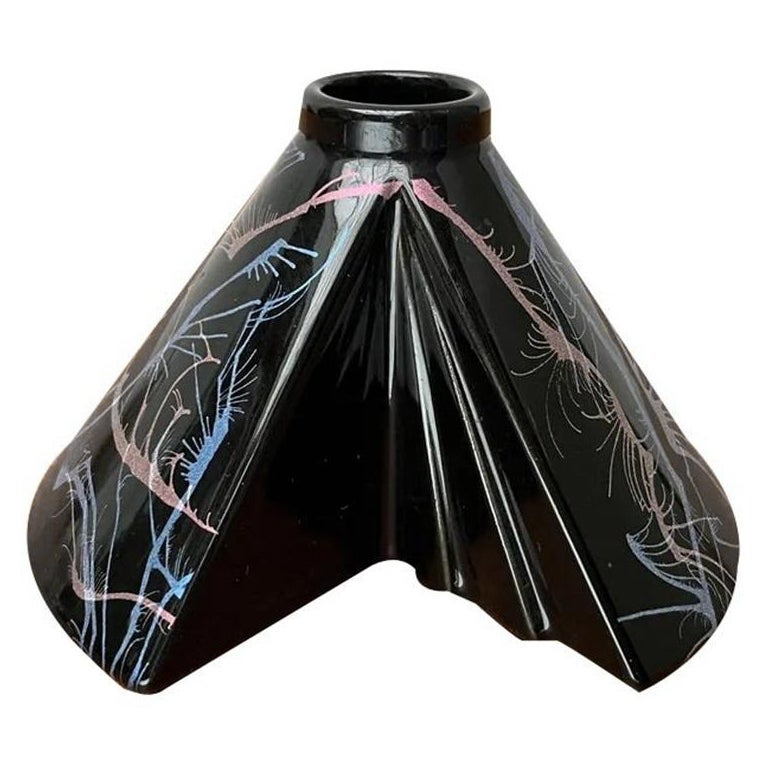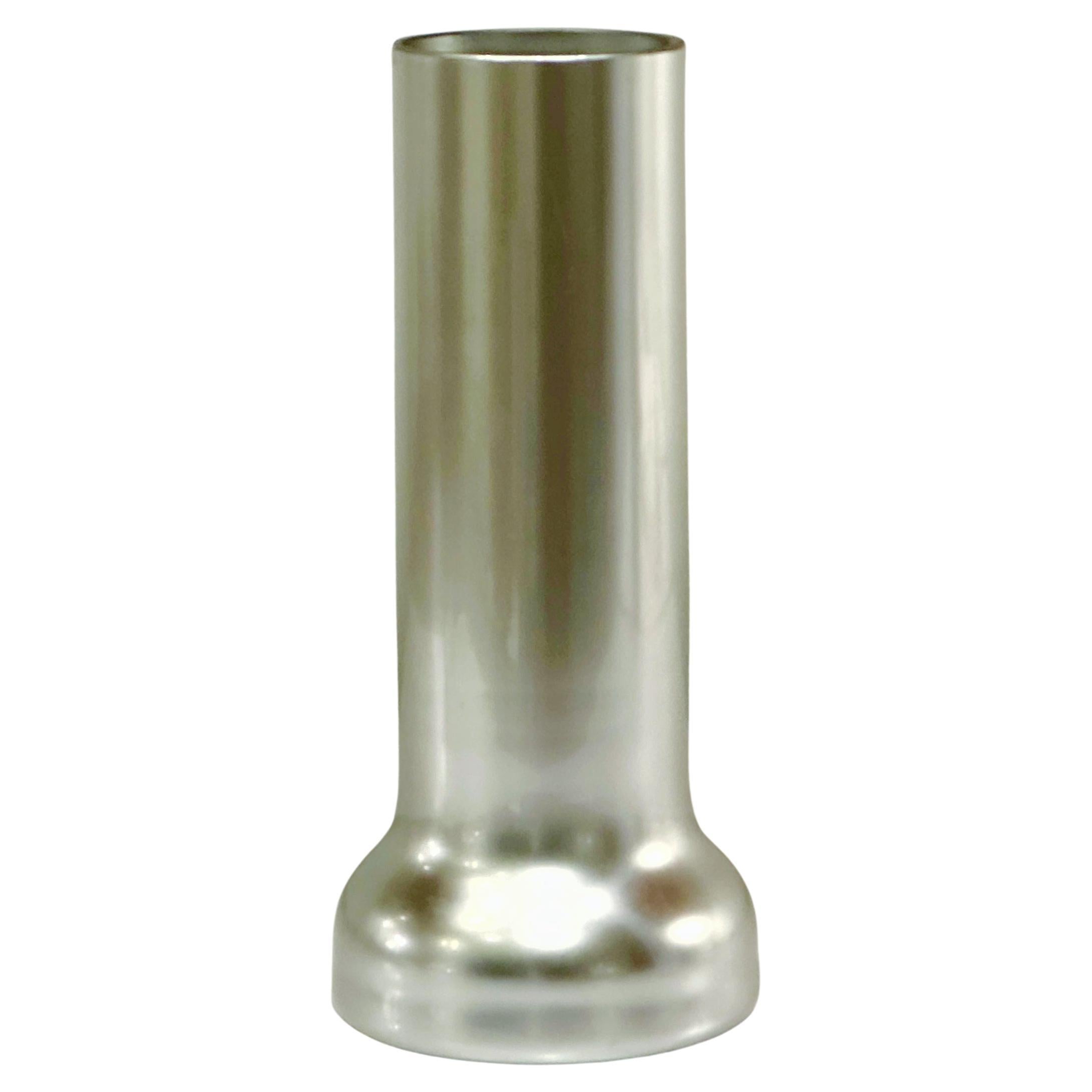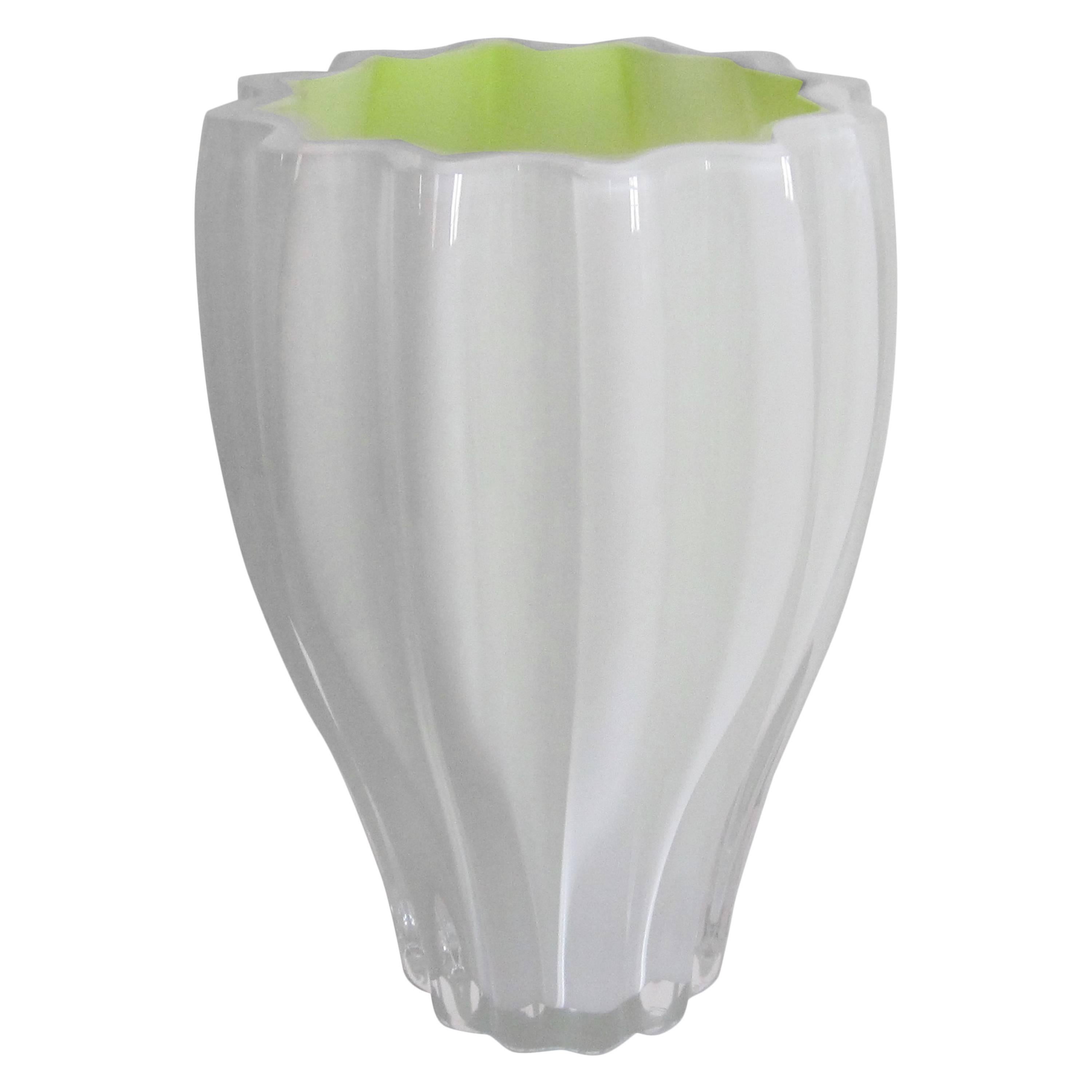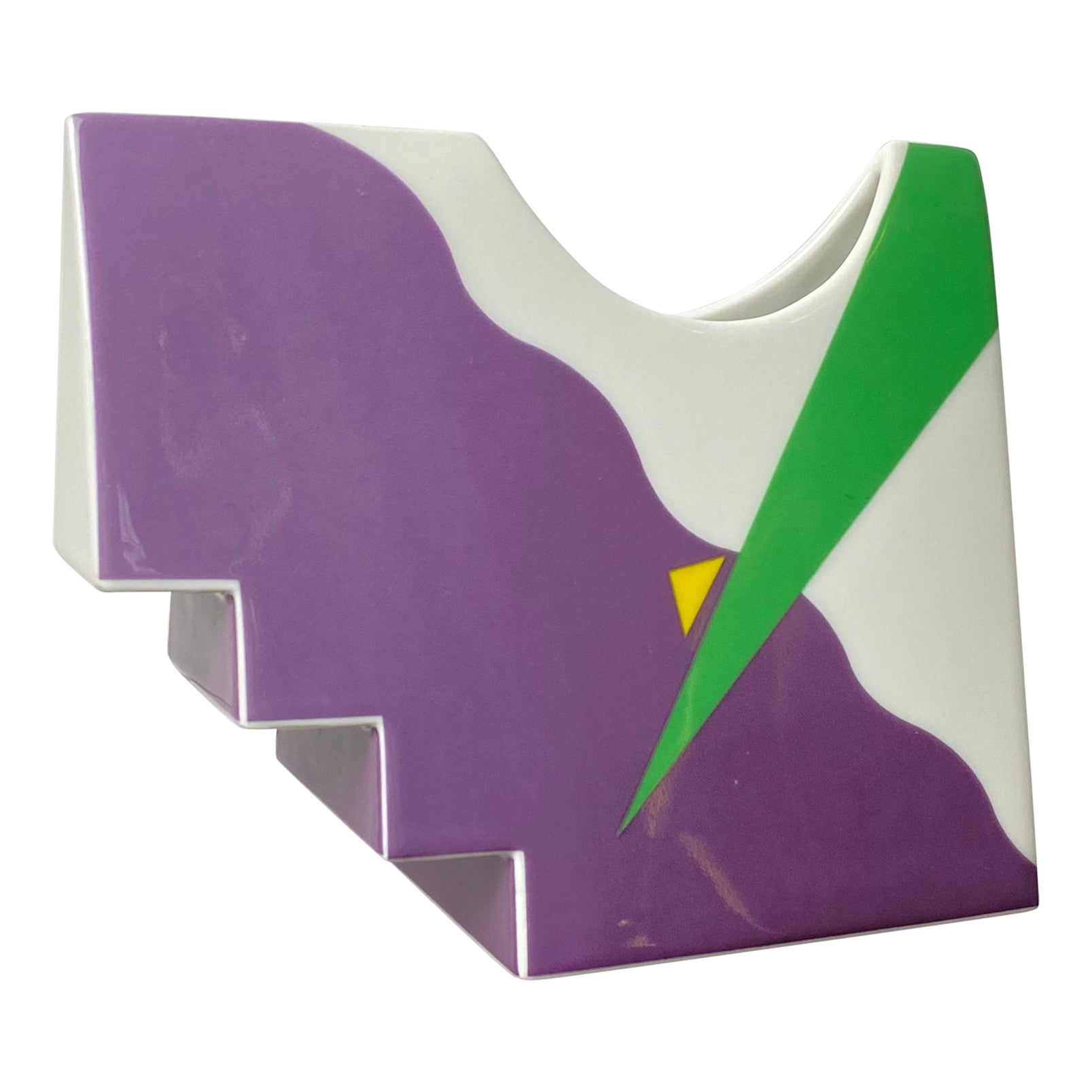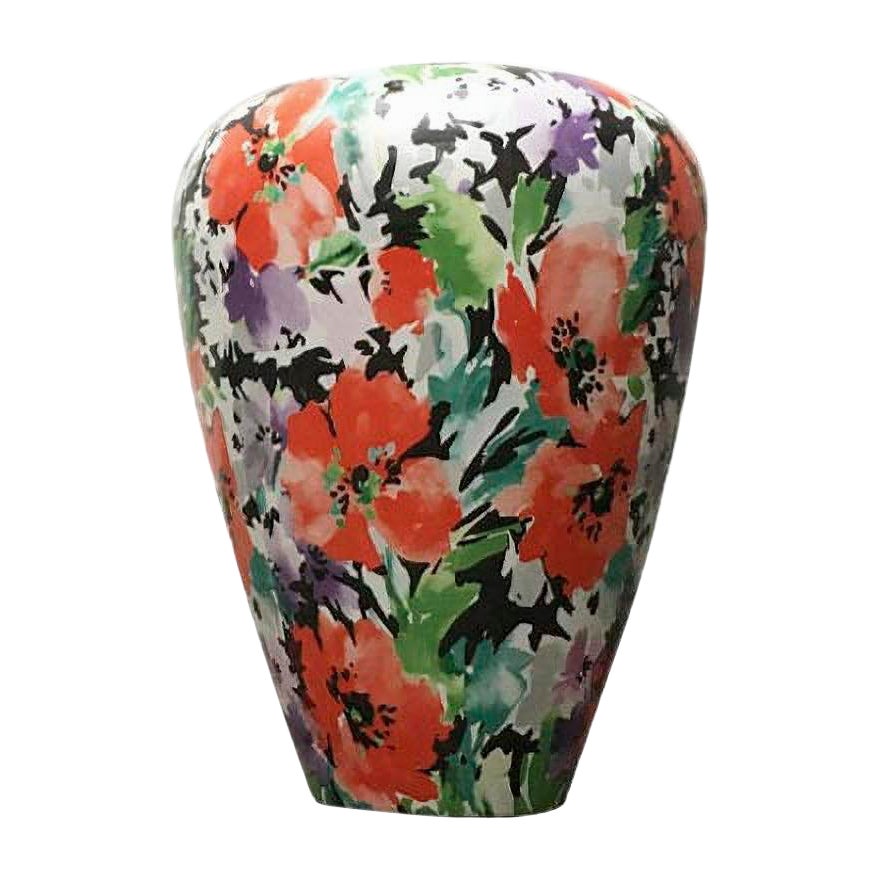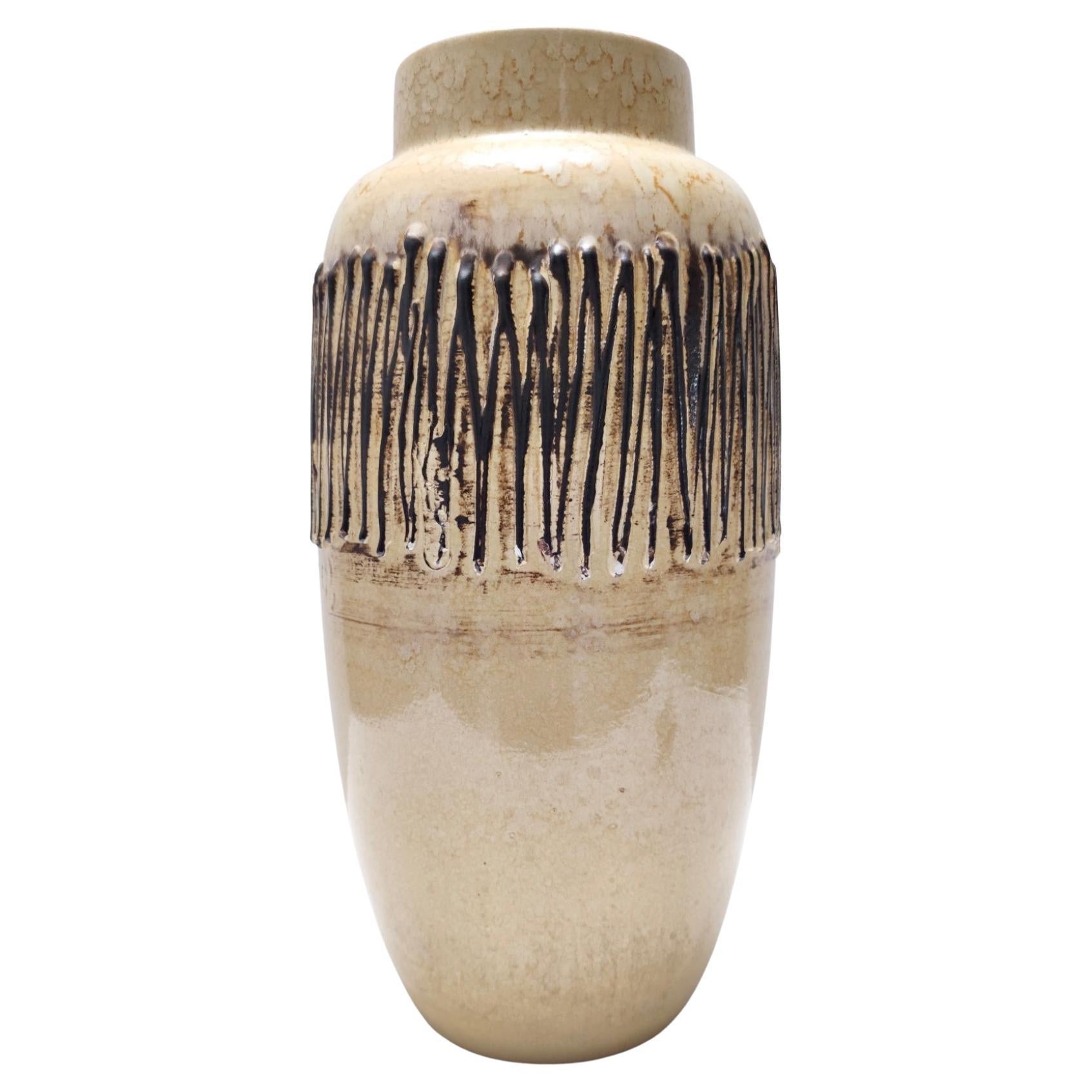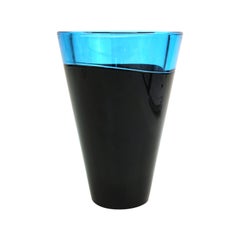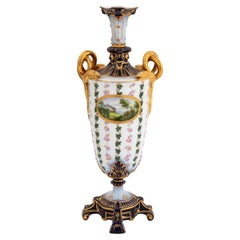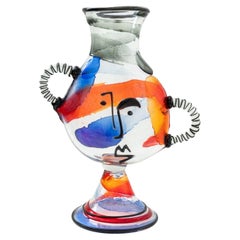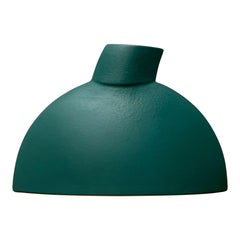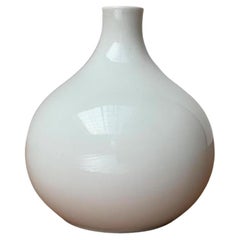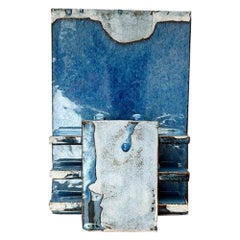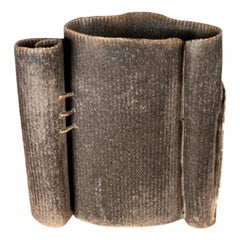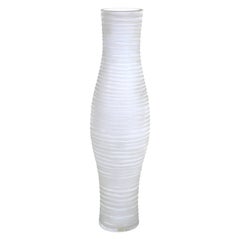
Leonardo German Postmodern Glass Vase
View Similar Items
Want more images or videos?
Request additional images or videos from the seller
1 of 9
Leonardo German Postmodern Glass Vase
$360List Price
About the Item
- Dimensions:Height: 13.5 in (34.29 cm)Diameter: 4 in (10.16 cm)
- Style:Post-Modern (Of the Period)
- Materials and Techniques:
- Place of Origin:
- Period:
- Date of Manufacture:Late 20th Century
- Condition:Wear consistent with age and use.
- Seller Location:Astoria, NY
- Reference Number:Seller: S138XX - 76200 - 04211stDibs: LU889323522022
About the Seller
4.9
Gold Seller
Premium sellers maintaining a 4.3+ rating and 24-hour response times
1stDibs seller since 2010
2,576 sales on 1stDibs
Typical response time: 3 hours
Authenticity Guarantee
In the unlikely event there’s an issue with an item’s authenticity, contact us within 1 year for a full refund. DetailsMoney-Back Guarantee
If your item is not as described, is damaged in transit, or does not arrive, contact us within 7 days for a full refund. Details24-Hour Cancellation
You have a 24-hour grace period in which to reconsider your purchase, with no questions asked.Vetted Professional Sellers
Our world-class sellers must adhere to strict standards for service and quality, maintaining the integrity of our listings.Price-Match Guarantee
If you find that a seller listed the same item for a lower price elsewhere, we’ll match it.Trusted Global Delivery
Our best-in-class carrier network provides specialized shipping options worldwide, including custom delivery.More From This Seller
View AllSoichiro Sasakura for Sasaki Japanese Postmodern 'San Marino' Art Glass Vase
By Soichiro Sasakura
Located in Astoria, NY
Soichiro Sasakura for Sasaki Japanese postmodern glass vase, deep opaque blue with sheer light blue band at top, marked "Sasaki" at base. 6.5" H x 9" Diameter.
Category
1990s Japanese Post-Modern Vases
Materials
Art Glass
$550 Sale Price
42% Off
German Porcelain Two Handle Vase
Located in Astoria, NY
German Porcelain Two Handle Vase, late 19th century, with snake entwined handles, oval painted landscape panel, signed illegibly "A. Schu... (?)", with bands of roses and grape vine,...
Category
Antique Late 19th Century German Neoclassical Vases
Materials
Porcelain
German Porcelain Campagna Urn Vase, 19th C.
Located in Astoria, NY
German Porcelain Two-Handled Campagna Urn Vase, late 19th century, the body painted with a panel of Apollo and Aphrodite and an interior scene of two women playing cards with a cat, ...
Category
Antique Late 19th Century German Neoclassical Vases
Materials
Porcelain
Mario Badioli "Hommage to Picasso" Art Glass Vase
Located in Astoria, NY
Mario Badioli (Italian, b. 1940) "Hommage to Picasso", Art Glass Footed Vase, with asymmetrical hands and Cubist face, signed "Badioli M." to base. 21.5" H x 16" W x 9.5" D. Provenan...
Category
20th Century Italian Post-Modern Vases
Materials
Art Glass
Italian Murano Art Glass Vase
Located in Astoria, NY
Italian Murano Art Glass Vase, 2000, yellow ground with blue swirls, green iridescence, and opaque black lip, illegibly marked "Valle of Raub (?)" and dated "2000" to underside. 12" ...
Category
21st Century and Contemporary Italian Modern Vases
Materials
Murano Glass
Mandruzzato Italian Modern Sommerso Glass Vase
By Mandruzzato
Located in Astoria, NY
Italian modern glass vase made with the sommerso technique by Mandruzzato in Murano. In great vintage condition with age-appropriate wear.
Category
Vintage 1970s Italian Modern Vases
Materials
Murano Glass
You May Also Like
Postmodern German Ceramic Vase from Amano, Germany
Located in Hamburg, DE
Postmodern German Ceramic Vase from Amano, Germany, in Very Good conditions. Designed 1990 to 1999 This piece has an attribution mark.
Additional information:
Materials: Ceramic
Col...
Category
20th Century German Post-Modern Vases
Materials
Ceramic
Postmodern German Minimalist Vase from Arzberg, 1980s
By Arzberg
Located in Hamburg, DE
Postmodern German Minimalist Vase from Arzberg, 1980s, in Very Good conditions. Designed 1980 to 1989 This piece has an attribution mark.
Additional...
Category
20th Century German Post-Modern Vases
Materials
Porcelain
Vintage Postmodern German Studio Pottery Vase, 1970s
Located in Hamburg, DE
Vintage Postmodern German Studio Pottery Vase, in Very Good conditions. Designed 1970 to 1979.
Additional information:
Material: Ceramic
Color: Blue
Styles: Postmodern
Country of Or...
Category
20th Century German Post-Modern Vases
Materials
Ceramic
Postmodern German Studio Pottery Art Vase Sculpture, 1982
Located in Hamburg, DE
Postmodern German Studio Pottery Art Vase Sculpture, 1982, in Very Good conditions. Designed 1980 to 1989.
Additional information:
Materials: Ceramic
Color: Beige
Styles: Postmodern...
Category
20th Century German Post-Modern Vases
Materials
Ceramic
Postmodern 'Harlequin' Art Glass Vase 1980s
Located in Meer, VAN
Postmodern 'Harlequin' Art Glass Vase, Europe, 1980s.
This is a very beautiful art glass vase from the 1980s. A fun and joyful postmodern 'harlequin' style design, with hand painted...
Category
Late 20th Century European Post-Modern Vases
Materials
Glass
Postmodern West German Pottery Vase from Steuler, 1980s
By Steuler
Located in Hamburg, DE
Postmodern West German Pottery Vase from Steuler, 1980s, in Very Good conditions. Designed 1980 to 1989 This piece has an attribution mark.
Additional information:
Material: Ceramic...
Category
20th Century German Post-Modern Vases
Materials
Ceramic
Recently Viewed
View AllMore Ways To Browse
Leonardo Glass Vase
Large Glass Flower Vase
Verre De France
Crystal Vase France
Large Silver Vases
Porcelain Lidded Vase
Antique Bedroom Paintings
Blown Glass Purple
Netherlands Vase
Mid Century Italian Bedroom Set
Swedish Ceramic Artists
Cased Glass Vase
One Of A Kind Ceramic Vases
Harry Hall
Vintage Green Glazed Pottery
Hand Blown Vase Blue
Signed Murano Glass Vase
Jug Vases
